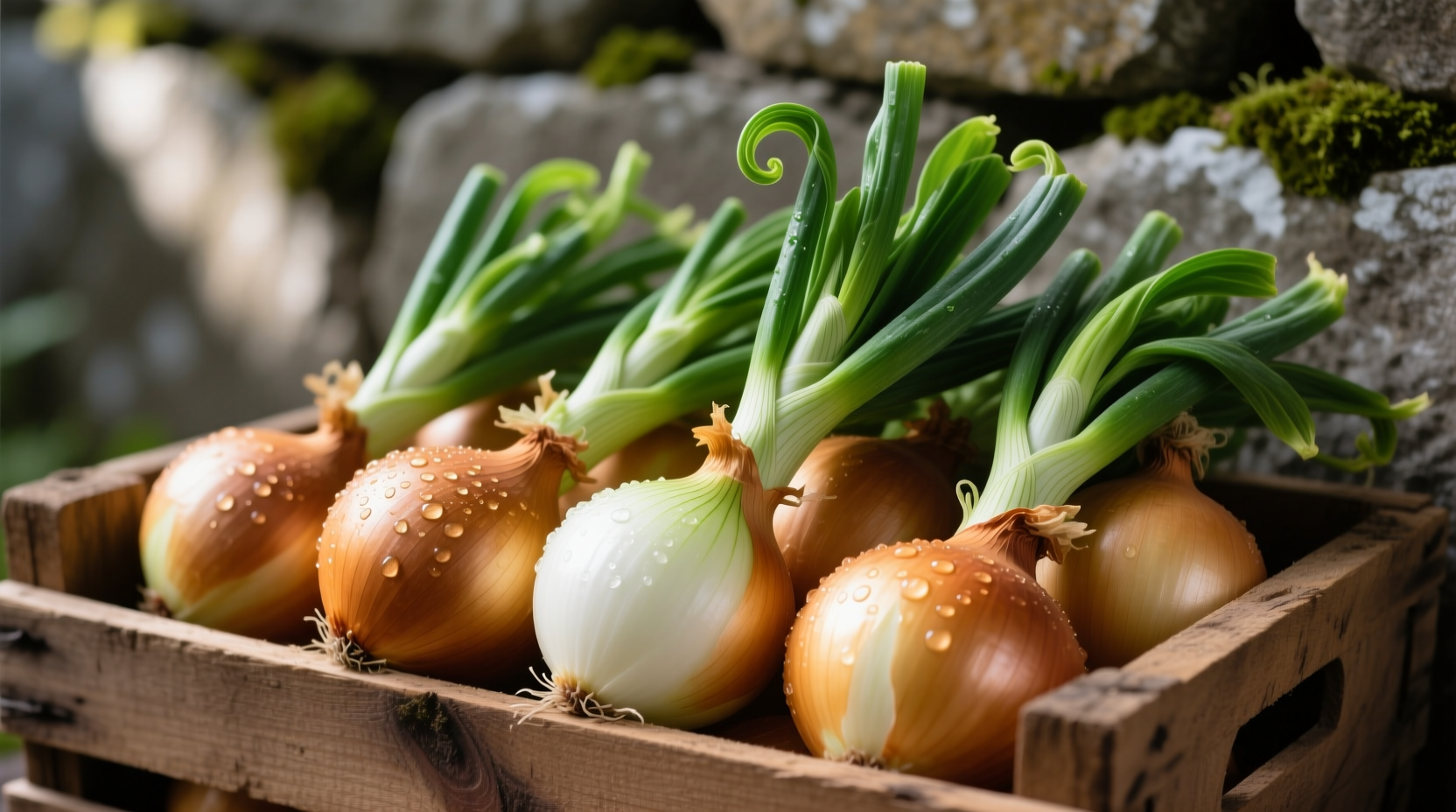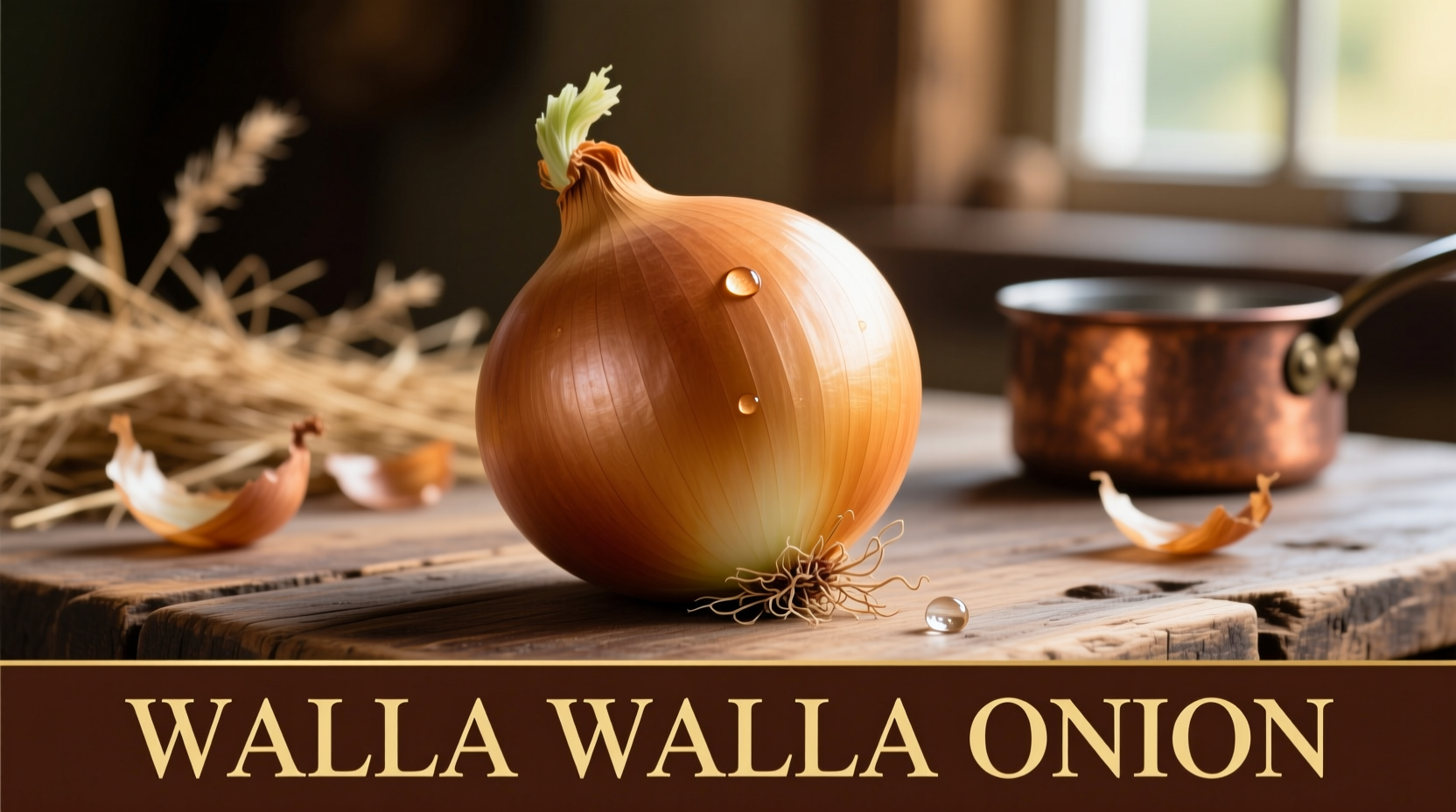The Sweet Legacy of Walla Walla Onions
When you bite into a Walla Walla sweet onion, you're experiencing a culinary treasure with deep agricultural roots. Unlike generic sweet onions found year-round, authentic Walla Walla sweet onions represent a specific geographical product with legally protected status. These onions trace their origins to 1918 when Peter Pieri, a Swiss immigrant farmer in Walla Walla, Washington, planted sweet onion seeds he'd brought from the island of Corsica. The unique combination of rich volcanic soil, perfect climate conditions, and careful cultivation practices transformed these seeds into what we now recognize as America's first officially designated sweet onion variety.

What Makes Walla Walla Onions Special
The magic of Walla Walla sweet onions lies in their remarkably low sulfur content compared to standard yellow onions. This chemical difference creates their signature mild, sweet flavor profile that won't leave you crying during preparation. Their high water content (approximately 90%) contributes to their crisp texture but also means they don't store as well as other onion varieties. This seasonal delicacy must be enjoyed fresh during its limited availability window.
| Onion Variety | Sugar Content | Sulfur Content | Seasonality | Geographical Protection |
|---|---|---|---|---|
| Walla Walla Sweet | 5-6% | Very Low | May-September | PGI Certified |
| Vidalia | 4-5% | Low | April-May | PGI Certified |
| Maui Sweet | 4.5-5.5% | Low | Year-round (limited) | Trademarked |
| Standard Yellow | 3-4% | High | Year-round | None |
According to the USDA Agricultural Marketing Service, Walla Walla sweet onions received their Protected Geographical Indication status in 2007, legally restricting the name to onions grown in the specific geographical region of Walla Walla Valley. This certification ensures consumers receive the authentic product with its distinctive flavor profile.
How to Select and Use Walla Walla Sweet Onions
When shopping for authentic Walla Walla sweet onions, look for the official logo and check for firm bulbs with dry, papery skins. The best specimens feel heavy for their size with minimal neck space. Unlike storage onions, these sweet varieties should be used within 2-3 weeks of purchase for optimal flavor.
Culinary applications shine when you use Walla Walla onions raw or lightly cooked. Their delicate flavor makes them perfect for:
- Fresh salsas and pico de gallo
- Sliced paper-thin on burgers and sandwiches
- Quick-pickled for tacos and salads
- Raw in salads where milder onion flavor is desired
- Lightly grilled or roasted to enhance natural sweetness
Professional chefs recommend avoiding prolonged cooking with Walla Walla onions, as their high water content causes them to break down more quickly than storage onions. For caramelizing, use lower heat and be prepared for a shorter cooking window.
Seasonality and Availability Considerations
True Walla Walla sweet onions are strictly seasonal, available from late May through September. The Washington State Department of Agriculture confirms that authentic Walla Walla sweet onions cannot be legally marketed as such outside this window due to their perishable nature and geographical protection requirements.
During off-season months, what's often labeled as "Walla Walla" in grocery stores are typically generic sweet onions from other regions. For the genuine article, visit farmers markets during summer months or look for the official Walla Walla Sweet Onion marketing logo with the certification year.
Preserving the Flavor: Storage and Preparation Tips
To maximize your Walla Walla sweet onion experience:
- Store unpeeled bulbs in a cool, dark place with good air circulation
- Never refrigerate whole bulbs (causes texture deterioration)
- Once cut, store in airtight container in refrigerator for up to 5 days
- Chill blades before slicing to minimize tearing
- Soak sliced onions in ice water for 15 minutes to enhance crispness
For home gardeners interested in growing similar varieties, the Walla Walla Sweets are not commercially available as seeds due to their protected status. However, the closely related 'Walla Walla Long Sweet Spanish' variety can be grown in similar climates with comparable results.
Simple Recipe Ideas to Showcase Walla Walla Onions
Maximize your seasonal Walla Walla sweet onions with these straightforward preparations:
Walla Walla Onion & Tomato Panzanella
Combine 2 cups cubed day-old bread, 1 large sliced Walla Walla onion, 2 cups ripe tomatoes, 1/4 cup olive oil, 2 tbsp red wine vinegar, salt and pepper. Toss gently and let sit 30 minutes before serving.
Quick-Pickled Walla Walla Onion Rings
Slice 1 onion into 1/4-inch rings. Heat 1 cup vinegar, 1 cup water, 1/4 cup sugar, and 1 tbsp salt until dissolved. Pour over onions and refrigerate for at least 2 hours before using on tacos or burgers.











 浙公网安备
33010002000092号
浙公网安备
33010002000092号 浙B2-20120091-4
浙B2-20120091-4